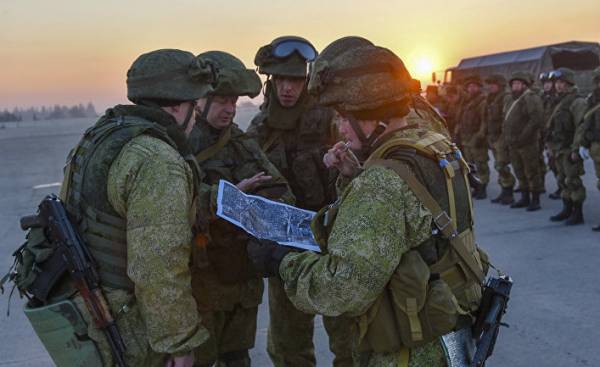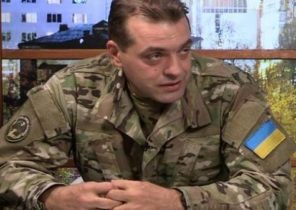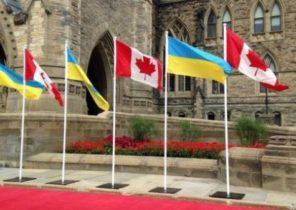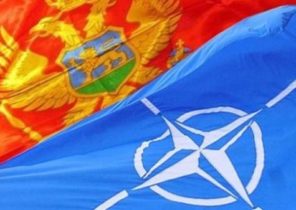
Within the United States American President trying to deal with the issues regarding relations with Russia. But in Syria, the ties between the United States and Russia continue to disintegrate. Monday, June 19, after us fighter jet shot down a Syrian warplane for the first time since the civil war in Syria, the Russian defense Ministry closed the channels “hot line” that was created with the aim of preventing unintended collisions with American planes in the skies over Syria. And this was only the beginning. The Russian defense Ministry has announced that “any aerial object” belonging to a coalition led by the United States and “found to the West of the Euphrates river, will be accepted in support of Russian ground and air defense as air targets”. We can say simply: you came on our territory, so we can also go to your.
Now a rather strange moment for a quarrel, because the last few days the Russian government is actively talked about the achievements on which the dreams of Donald trump, defending the need to establish partnership relations with Russia in the fight against terrorism. First, the Russian defense Ministry announced that its military destroyed a few dozen of the field commanders of ISIS (a terrorist organization banned in Russia — approx. ed.) and perhaps a few hundred fighters in its airstrikes at Raqqa — ISIS de facto capital in Syria in late may. The Ministry also reported that currently it checks the information that among the killed militants could not be the leader of the ISIL Abu Bakr al-Baghdadi (Abu Bakr al-Baghdadi). Then it said that earlier in June, the Russian military destroyed two ISIS field commanders and almost 200 militants during airstrikes in Deir ez-Zor in Eastern Syria.
The Russians, apparently, “trying to change the concept of its military campaign in Syria and start doing what they supposedly did but actually didn’t do for two years, that is to fight terrorists,” said John Herbst (John Herbst) from the Atlantic Council, which last year became co-author of a report on how the military campaign of Vladimir Putin in Syria from the very beginning assumed the provision of assistance to Syrian President Bashar al-Assad. (The Russian government claimed that all the forces opposed to Assad’s “terrorists”, but from the beginning the Russian military attacked not so much on ISIS, as anti-government groups, including those supported by the USA.)
So, what could explain the sudden shift in the attention of Russia to ISIS? And why this contributed to the establishment of its relations with the United States?
Genevieve Casagrande (Genevieve Casagrande), analyst from the Institute for the study of war, is skeptical of the theory. It is not too trusts the information that the Russian military launched those air strikes, not to mention the fact that they are supposed to destroy Baghdadi and change your plans in Syria. In the words of Casagrande, “the vast majority of Russian airstrikes inside Syria was inflicted on the Syrian opposition,” which opposes Assad, but the Kremlin has consistently published false information about who they hit, whether civilians or forces of the moderate opposition.
The Institute, which works Casagrande, maps strikes in Syria on the basis of official statements and data, reports from the field and intelligence information obtained from open sources. “We base such airstrikes, which we get 20-30 different messages about what was a particular blow, for what object it was inflicted, and photos of the plane, reports of the pitch of the sound produced by this aircraft, how many aircraft were in the group, and so on,” she said. While the experts of the Institute managed to see a “minimal” amount of evidence of Russian air strikes at Raqqa on 28 may — that is the day when, according to representatives of the Russian army, they managed to eliminate Baghdadi. “This does not mean that it does not,” acknowledged Casagrande, citing the fact that the network of activists of her Institute in this region of Syria is weak. But for now, “we believe the message about this strike, at best, a rumor.” (American officials also could not confirm reports about this strike, and some activists have described it quite well, as did the Russians.)
“Russia has come to Syria not in order to destroy ISIS,” said Casagrande, despite the fact that ISIS militants attacked the Russians and pose a serious threat to the country. Russia came to Syria to support its ally, the Assad government, and, accordingly, to maintain its geopolitical influence in the middle East, and military presence in the Mediterranean sea. According to her, despite the defeat that the opposition fighters were killed in Aleppo in December, it is they — not ISIS — is the main threat to the Assad government and, accordingly, for the Russians.
“Russia likes to portray itself as a great fighter against terrorism, working in tandem with US,” said Casagrande, adding that this is partly due to its desire to position itself as a key subject of security in the middle East. As noted by my colleague Julia Ioffe (Julia Ioffe), Russia is trying to consolidate the image of a necessary ally of the West in its fight against terrorism at least since 11 September 2001. However, “Russia is usually fighting ISIS, only when it is profitable,” added Casagrande.
This, apparently, converted into the usual scenario: Russia strikes on the Syrian rebels, and then helps to conclude a temporary truce, during which it prepares for the next offensive against opposition fighters and strikes against ISIS. In February 2016, for example, Russia helped to conclude a short truce in Syria. In March, she helped the Syrian government to dislodge ISIS from the ancient city of Palmyra. But by the autumn she had already participated in large-scale military campaign to oust the rebels from Aleppo.
Before the new turn of Russia to ISIS, may 4, Russia, Turkey and Iran agreed to create several “zones of de-escalation” in Syria. Look at the map, compiled by experts of the Institute for the study of war, which shows the probable strikes of Russia on the territory of Syria, struck in late April (left) and early may (right). At the end of April, before the agreement on the establishment of zones of de-escalation, experts have recorded a number of air strikes inflicted by the Russia in the region of Idlib, where opposition forces, including some jihadist groups, however, they have not recorded any attack on territory held by ISIS. In early may, after the conclusion of the agreement on the establishment of zones of de-escalation, the experts noted a sharp change: Russia inflicted several blows to the territory of ISIS.
According to Casagrande, Russia can bomb ISIS in their attempts to establish its influence in Syria as soon as this terrorist group is rapidly losing ground, will be destroyed. The advance of the troops fighting against ISIS, recently provoked a heated debate between the leading powers in the first place between Iran, Russia, Turkey and the United States — who want to protect their interests. For example, after an airstrike by the Americans on the Syrian military base, suffered in connection with the use of chemical weapons by the Syrian government forces, the level of confrontation between the administration and the Assad regime has grown substantially. In may, the United States struck prosalovskaya military convoy, which came too close to us base in the South-East of Syria. Sunday, June 18, the Americans shot down a Syrian military aircraft that attacked U.S.-backed opposition fighters in Northern Syria.
Russia, whose influence is most strongly noticeable in the West of Syria, “is a moment to strengthen its positions in the East of the country and to remind US that she is a key player in Syria, which the United States will have to consider,” said Casagrande.
In this context, Russia’s air strikes on positions LIH inflicted on her in the last few weeks, can be considered as an attempt to keep the US and its allies in the North-East and South-East of the country. On the map below, as noted by Casagrande, it is clear that USA have the biggest impact in the purple zone, where Arab and Kurdish ground forces are on the offensive against ISIL, whereas Turkey has the biggest impact in yellow, and Russia, Iran and the Assad government — in the pink zone.
Even if trump and Putin will eventually decide to unite in the fight against ISIS, us laws currently prevent the us military to directly coordinate their actions with the Russian military in Syria, said Simon saradzhyan (Simon Saradzhyan), expert at the Belfer center for science and international relations at Harvard. “How would Russia want to expand cooperation with the U.S. on Syria — and I believe she wants to do it, because it will help to normalize Russian-American relations — I doubt that we will see a qualitative improvement in how Russia and the United States interact with each other”, — he wrote in his email.
As explained Casagrande, the military campaign against ISIS means “not only clean, but also how you can clear the area, and which local structures need to be created on this place next.” Here lies the problem: Russia and USA have a common enemy — ISIS. However, they still can’t agree on what needs to be done after the destruction of this terrorist organization.







